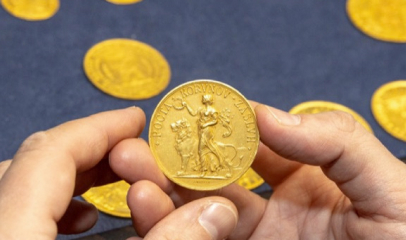
The artistic motifs of the oldest Central European Celtic coins
The artistic motifs of the oldest Central European Celtic coins reflect the often inspiring sources of inspiration that the Celts knew from the Mediterranean - especially from Macedonia, Thrace, but also from Italy, mainland Greece, Asia Minor settlements, Sicily and probably other areas of the ancient world. In the ancient world, most of the adopted motifs represented, to varying degrees, standardized depictions of popular scenes or themes, usually based on Greek mythology. However, this tendencies were far from reserved for coins only. On the contrary, their domain was applied art, representing the ubiquitous background of ancient everyday life, with which the Celts came into contact during their conquests at the turn of the first and second quarters of the 3rd century BC and for a long time as mercenaries in the service of Greek rulers.
Coin minting was a new phenomenon in the environment of Celtic society
The adoption of ancient motifs, as well as weight standards, is a clear proof that coin minting was an imported and ideologically completely new phenomenon in the environment of Celtic society. Ancient motifs were barbarized in Central Europe to varying degrees, both in form and content. It is not at all clear how many users of Celtic coins even suspected that the coin images of “their” currency were based on patterns popular in distant regions of the ancient world.
The rapid development of coin minting in the Amber Trail corridor, in the area of Moravia and Lower Austria, in the middle of the 3rd century BC, represented a powerful inspiration for the development of coin minting in the surrounding areas of La Tène Europe, especially in Bohemia. With a certain delay, many types of gold and silver coins were minted in Bohemia in the monetary system, which largely copied the parameters of the monetary system of the Amber Trail corridor. With a few exceptions, gold staters, their thirds, eighths and twenty-fours, as well as silver rounds, were minted.
1/3 Stater (2nd century BC)
A very interesting type of gold Celtic coin minted in Bohemia for a long period of time is the type of kneeling archer or kneeling figure holding wands. Stater third of this type will be auctioned in Auction 27 under no. 2. The significance of the motif of the reverse side with a half-kneeling figure holding two crossed rods or wands is unclear. However, the similarity of the depicted scene with the motifs of Achaemenid coins of the 5th to the 4th century BC is very striking. Golden Persian dareikos (Gk. dareikós statḗr), trade coins with the motif of a kneeling king-archer, have been minted in vast numbers for more than a hundred years, and as very valuable trade coins have also been distributed in Asia Minor. Often these coins are stamped eccentrically and the depiction of the bow is not complete. It is easy to imagine that this depiction was the model according to which Celtic coins were minted in Bohemia.





















